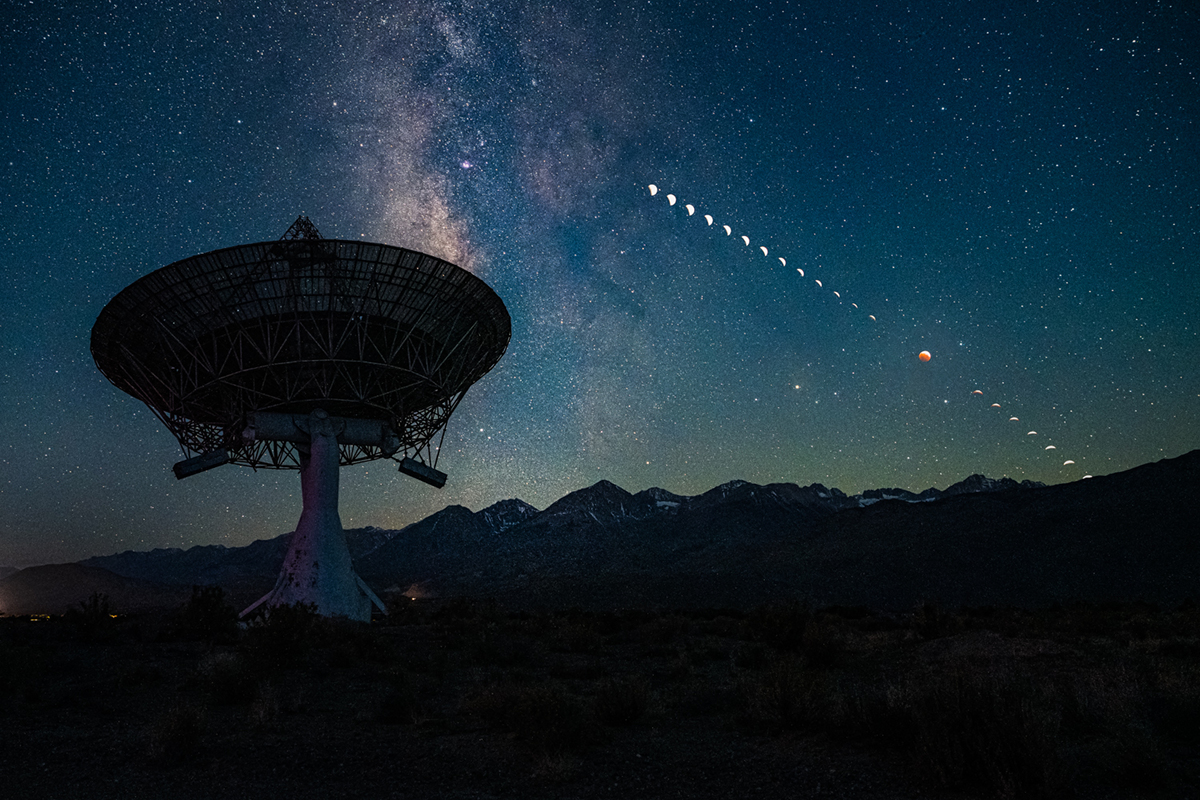2020 May 2
Radio, The Big Ear, and the Wow! Signal
Image Credit & Copyright: Rick Scott
Explanation: Since the early days of radio and television we have been freely broadcasting signals into space. For some time now, we have been listening too. A large radio telescope at Ohio State University known as affectionately The Big Ear was one of the first listeners. The Big Ear was about the size of three football fields and consisted of an immense metal ground plane with two fence-like reflectors, one fixed and one tiltable. It relied on the Earth’s rotation to help scan the sky. This photo, taken by former Big Ear student volunteer Rick Scott, looks out across the ground plane toward the fixed reflector with the radio frequency receiver horns in the foreground. Starting in 1965, the Big Ear was used in an ambitious survey of the radio sky. In the 1970s, it became the first telescope to continuously listen for signals from extraterrestrial civilizations. For an exciting moment during August 1977 a very strong, unexpected signal, dubbed the Wow! Signal, was detected by the Big Ear. But alas, heard only once, the source of the signal could not be determined. In May 1998 the final pieces of the Big Ear were torn down.
Experts Debate: How will humanity first discover extraterrestrial life?
Tomorrow’s picture: a message from Earth
无线电波、大耳朵以及“哇!”讯号
影像提供与版权: Rick Scott
说明: 自从人类发明收音机及电视以来,我们就能不停的对太空广播。而长久以来,我们也在聆听来自太空的广播。其中,位在俄亥俄州立大学、昵称为” 大耳朵 “的电波望远镜,就是最早的接收器之一。 大耳朵的大小和3个足球场相当,由一个庞大的金属地板和两面栅栏状的反射板(其中之一固定,另一面可以改变倾角)所组成,然后靠地球自转来扫瞄天空。这张由当年的学生史考特所拍摄的照片,越过地板眺望固定的反射板,前景则是喇叭状的接收器。从1965年起,大耳朵在无线电波段对天空进行大规模的巡天。在1970年代,它成为首座持续聆听外星文明广播讯号的望远镜。在1977年的8月,大耳朵记录到一个没意想到的、昵称为“哇!”的强烈讯号。遗憾的是这个讯号只接收到一次,因此其来源无法确定。在1998年5月,完成了大耳朵的最后拆解工作。
Experts Debate: How will humanity first discover extraterrestrial life?
明日的图片: a message from Earth




外星幼年生物的卖萌行为被其长者及时制止,阻止了一次星际战争。